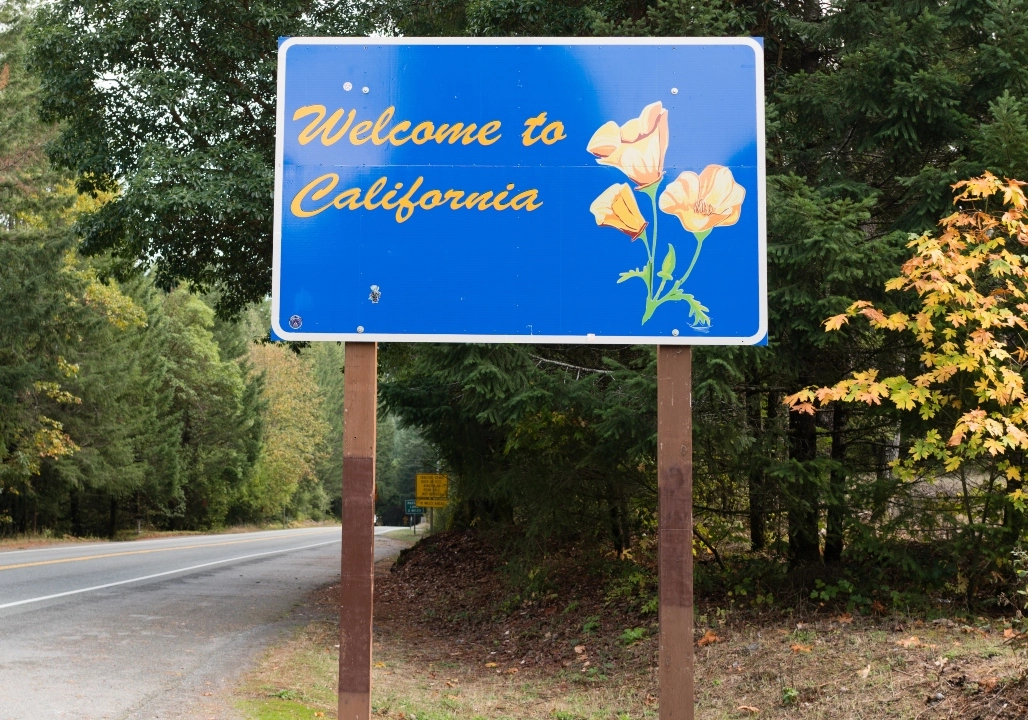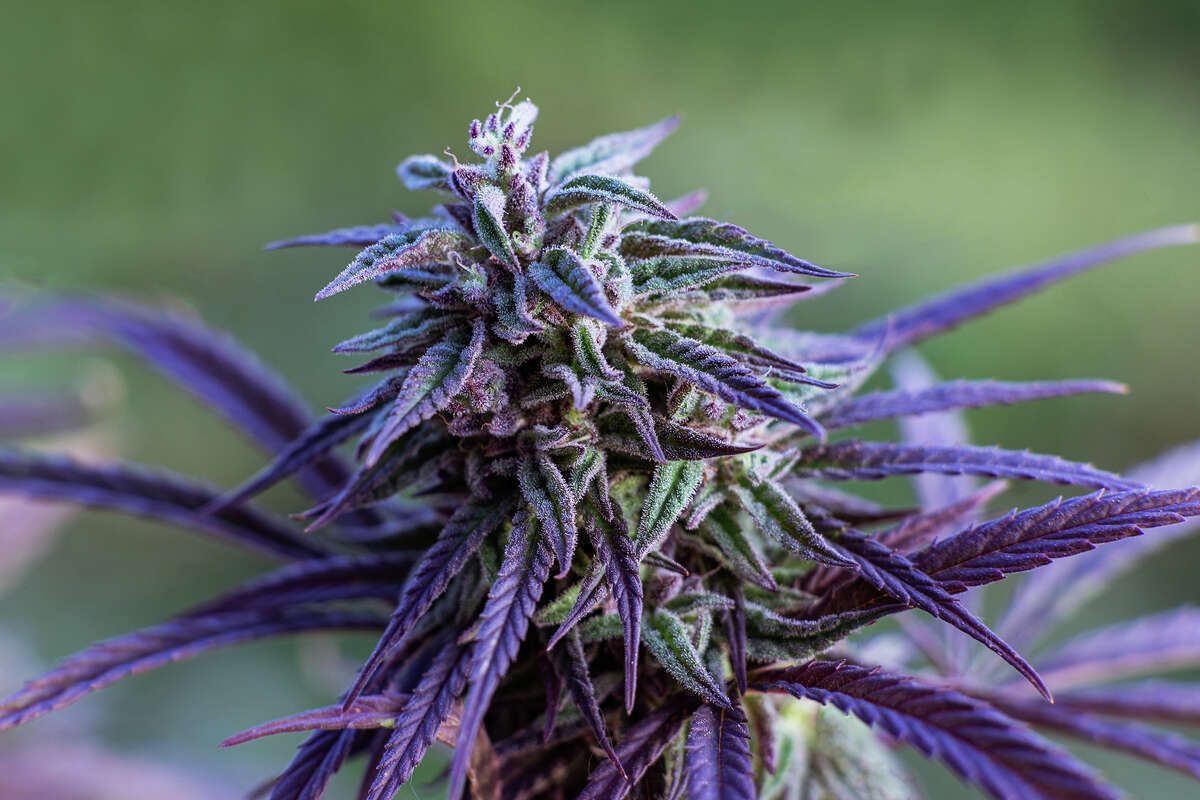And yet another story about the negative...and apparently anticipatable by all but greedy fucking politicians....impact of a cannabis tax cash free for all by government. I mean...who would have thunk. Fucking idiots.
And what is their response....mind boggling:
"At budget hearings on April 21, the county supervisors tackled more fallout from the market decline as they looked for ways to extract more cash from the industrial-scale cannabis that they paved the way for, five years ago.
North County Operators with Permits for More Than 160 Acres of Pot Walked Away This Month, as Supervisors Sought Way to Shore Up Slumping Cannabis Tax Revenues.
In a sign of the times, four growers who had obtained zoning permit approvals to plant 163 acres of outdoor cannabis in the North County withdrew their applications for business licenses this month, effectively abandoning their operations, county officials said.
Those withdrawals were on the minds of county supervisors during budget hearings this month as they wrestled with an ongoing decline in cannabis tax revenues. They want to boost revenues even as they acknowledge that higher taxes could force out more growers.
“I want to see us come up with something that’s fair, just and predictable, as much as we can,” said Supervisor Steve Lavagnino of Santa Maria, a chief architect of the county’s 2018 cannabis ordinance. “We’re in a downturn, no doubt, and we’ve got to weather it.”
Amid a glut on cannabis in California, the prices for wholesale cannabis flower have plunged by half from their peak of $1,400 in 2020 to about $660 per pound now. The state is believed to be producing three times as much pot as residents can consume — much of it grown in Santa Barbara County — effectively fueling the black market where, by most estimates, two-thirds of the sales are taking place.
Statewide, county officials said, the number of active cannabis cultivation licenses has fallen by 20 percent since early 2022, as a host of provisional licenses expired and were not renewed.
The largest of the cannabis withdrawals in Santa Barbara County this month was submitted by SFS Farms OPCo l LLC at 4874 Hapgood Rd., on a ranch owned by Bob Campbell at the western end of the Sta. Rita Hills wine region, west of Buellton. The then-owners, investors in Colorado and Manhattan Beach, had proposed to plant 87 acres of cannabis there.
Back in early 2021, representatives of the Melville, Gainey, Zotovich and other vineyards, joined by a group of neighbors on Highway 246, had turned out in bitter opposition to the SFS project. At a public hearing, they were dismissed as “misinformed,” “biased” and “fear-mongering” by an SFS attorney as they argued that the massive size of the proposed grow — about 65 football fields’ worth of marijuana — would overwhelm nearby homes and tasting rooms with the skunky smell of pot and blow it into Buellton on the prevailing winds.
The Board of Supervisors approved a zoning permit for SFS Farms, with Supervisor Joan Hartmann, who represents a portion of the Sta. Rita Hills, casting the only “no” vote. But the project never got off the ground.
Representatives for SFS, a shell company that was set up in Nevada, could not be reached for comment this week on their decision to withdraw. But Al Wagner, a senior vice president of agriculture for Foley Family Farms, a wine and avocado operation next to SFS Farms, said the family had been put to some expense and worry over the potential impacts of a cannabis operation next door. Foley Family Farms is located directly west of SFS Farms on what used to be the Fess Parker Vineyard.
“The county ordinance is not effective at managing conflicts between cannabis and other agricultural activities such as vineyards, wineries and other crops,” Wagner said. “Foley Family Farms believes this project was not well sited and would cause significant impacts to surrounding agriculture. We are pleased to learn SFS has abandoned its cannabis operations.
“It’s been a very expensive road over the last three or four years,” Wagner said, There was the cost of preparing for public hearings, he said, and the concern that pesticide spray drift from avocados onto cannabis “could impact us from a legal standpoint.”
In addition to SFS, plans for 63 acres of cannabis at 3700 Telephone Rd. in the Santa Maria Valley were withdrawn by WTMCA LLC; plans for nine acres at 3151 San Julian Road in the Lompoc Valley were withdrawn by JJPC Creekside; and plans for four acres at 365 N. Refugio Rd. in Santa Ynez were withdrawn by Elements 5.0 Corporation LLC, according to Sydney Pettaway, a business specialist with the County Executive Office.
Since the county started tracking withdrawals last fall, growers have walked away from plans for about 285 acres of cannabis, she said.
“It’s unfortunate; we’ve lost a lot of operators who wanted to pursue their business licenses,” Pettaway said. “It’s been tough. You never want to see people fall out that way.”
Tapping the Wait List
For other growers, the recent withdrawals may represent an opportunity. To replace those who walked away this month, two growers already on the eligibility list have been offered an expansion in acreage under the county’s 1,575-acre cap on outdoor cannabis, Pettaway said.
Anderson Development SB LLC would have the opportunity to expand by 82 acres for a total of 187 acres at 100 Salisbury Canyon in the Cuyama Valley, potentially becoming the largest cannabis operation in the county. In state filings, Micah Anderson of La Jolla is listed as the manager of Anderson Development; he is the founder and CEO of LEEF Holdings of La Jolla, one of the state’s largest vertically integrated cannabis companies.
In addition to Anderson, Pettaway said, Heavenly Green Inc. has been offered the chance to expand by 23 acres for a total of 60 acres at 4301 Dominion Rd. in the Santa Maria Valley.
Finally, six other cannabis operators on the waiting list can now apply for county business licenses under the acreage cap, Pettaway said, as follows: 25 acres at Z Farms, 6893 Foxen Cyn Rd. in Los Olivos; 17 acres at Cat Cyn Inc., 7050 Long Canyon Rd. in the Santa Maria Valley; six acres at Cuyama Greens, 501 Harvey Rd. in the Cuyama Valley; four acres at 92nd G25, 851 E. Hwy 246 in the Lompoc Valley; three acres at Calynx Inc., 6968 Cat Canyon Rd. in the Santa Maria Valley; and two acres at Stateside Greens, 3851 Telephone Rd. in the Santa Maria Valley.
If any of these growers are not ready to apply for a license, the county will offer a spot on the eligibility list to the next grower in line, Pettaway said. In all, she said eight operators proposing 77 acres of cannabis remain on the waiting list; all have been approved for zoning permits.
In addition to the North County withdrawals, Yamaoka, a proposed three-acre greenhouse operation at 1552 Casitas Pass Road, has been removed from the eligibility list, Pettaway said. The operator had made no progress on the business license application and did not respond to the county’s requests for information, she said.
‘We Had High Hopes’
At budget hearings on April 21, the county supervisors tackled more fallout from the market decline as they looked for ways to extract more cash from the industrial-scale cannabis that they paved the way for, five years ago.
Cannabis has been, at best, a volatile revenue source for the county. This year’s tax revenues from cannabis, estimated at $6.7 million, will be coming in nearly 60 percent below the county’s $16.3 million projection for fiscal year 2022-23, records show. Last year’s revenues fell well short, too, because of the glut on the market.
Next year, the county is projecting $7.5 million in cannabis revenues, a slight increase based on a few new pot shops that are expected to open. But that’s less than half the revenue peak of $15.7 million in 2020-21.
The expenses alone for what the county calls its “cannabis program” come to nearly $6 million yearly, including law enforcement, permitting and tax collection.
“We had high hopes for the cannabis tax as a way of growing the pie, and that’s a big question now,” said Supervisor Joan Hartmann, who represents the wine country west of Buellton, where vintners and urban residents have clashed with outdoor cannabis growers over the pungent smell of pot at harvest time. “We’re trying to find an alternative, so that we don’t have to have service-level reductions.”
In that vein, the supervisors discussed how a potential library tax and increases in the local sales tax, hotel bed tax and Montecito flood control assessments might help the county keep pace with growing labor and operational expenses in fiscal year 2023-24 and beyond. Any formal tax proposals would appear on the November 2024 ballot, at the earliest.
For now, the board authorized the “swap” of $7 million in non-cannabis monies from the general fund to pay for libraries, long-term planning, and park and trail improvements — expenditures that had been previously earmarked for cannabis funds.
Still, as board Vice Chair Steve Lavagnino, a chief architect of the county’s permissive cannabis ordinance, pointed out, cannabis taxes have brought in $50 million since 2018. That’s more than any other tax program aside from property taxes. (This fiscal year alone, property taxes are projected to bring in $262 million, or 77 percent of the county’s $340 million general fund.)
‘Nobody’s Happy’
The bread and butter of the cannabis taxation system in Santa Barbara County is its four percent tax on gross sales receipts, or gross income, from cultivation. But because it relies on self-reporting, the deficiencies have been glaring. The county’s quarterly tax reports show that many growers routinely report zero receipts or fail to report at all.
The county Treasurer-Tax Collector will spend $522,000 this fiscal year to conduct audits of cannabis growers, who sometimes don’t understand that it’s a taxable transfer when they move plants from a nursery to mature cultivation, said Brittany Odermann (formerly Heaton), principal analyst for cannabis in the County Executive Office. The county’s taxes on gross receipts range from one percent for nursery plants to six percent for retail cananbis.
“I’m constantly frustrated by the gross receipts tax,” said Supervisor Bob Nelson, whose district includes part of the Sta. Rita Hills, a federally designated American Viticultural Area. “I’ve always desired something that would reduce complexity and increase transparency. I want us to get out of the auditing business. We have had to build all this infrastructure to try to make sure we’re catching people.
“We have a lot of really good operators in the county, and we also absolutely have some not so great operators that are avoiding taxes by moving product around and selling it back to themselves at different numbers.”
A change to a cannabis tax based on the square footage of the “canopy” of the plants under cultivation — the most widespread tax system in use in the California — would guarantee a larger and more predictable revenue stream, Odermann told the board. It also would discourage operators with permits from not growing any cannabis, she said.
A rough estimate of revenues based on square footage of cannabis under cultivation if, say, the county imposed a tax of 60 cents per square foot of Carpinteria greenhouse cannabis and 30 cents per square foot for outdoor cannabis in the North County — within the range of what other counties are assessing — Santa Barbara County might see tax revenues of $19 million yearly, Odermann said.
Under that scenario, she said, a typical outdoor operation, at 60 acres, would pay $588,000 per year in tax revenues; a 25-acre outdoor operation would pay $245,000; and a typical greenhouse operation, at five acres, would pay $98,000.
‘No Perfect Answer’
Yet across California, some counties that base their cannabis tax collection on the square footage of “grows” have significantly reduced their rates, Odermann said. Some, she said, are considering at least partially adopting a system like Santa Barbara County’s to capture market fluctuations. Yolo and Santa Cruz counties rely on a gross receipts system, and they are sticking with it even as growers are pulling out.
“Nobody’s happy right now with the state of cannabis tax revenues,” Odermann told the board. “It’s not so much how they’re being collected; it’s really about the market and the inability of the legal market to take hold. There’s no perfect answer here.”
Humboldt County, which regularly trades places with Santa Barbara County as No. 1 in the state for active cannabis cultivation licenses, has suspended its tax rates altogether for cannabis cultivation for two years, Odermann said.
“The market is down,” she said. “Is that the way it’s going to be forever? I don’t necessarily think so. The people who know what they’re doing are going to stick with it and there’s going to be revenue there.”
Other counties are looking into building hybrid tax systems based on gross receipts and the square footage of cannabis operations, Odermann said, adding, “Many of these jurisdictions are finding that more flexibility they can build into their ordinance to account for these market fluctuations, the better off they are.”
The board may want to consider assessing a minimum tax based on square footage, together with a tax based on gross receipts beyond that minimum, and make annual adjustments to keep up with the market, Odermann said. There’s no precedent for such a model, she said, adding, “To date, there hasn’t really been an industry standard for indexing.”
The only public comment at the April 21 hearing came from Joe Armendariz, a cannabis industry consultant who said Humboldt County got it right.
“Good grief,” he said, “… the cannabis industry is in a severe recession … To contemplate raising taxes on our beleaguered cannabis industry would just be counterproductive.”



